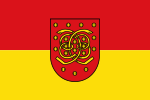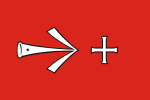This article has multiple issues. Please help improve it or discuss these issues on the talk page . (Learn how and when to remove these messages)
|
This page lists the municipal flags of Northern Germany. It is a part of the Lists of German municipal flags, which is split into regions. In turn, it is also split into states due to its size.

































































































































































































































































































































